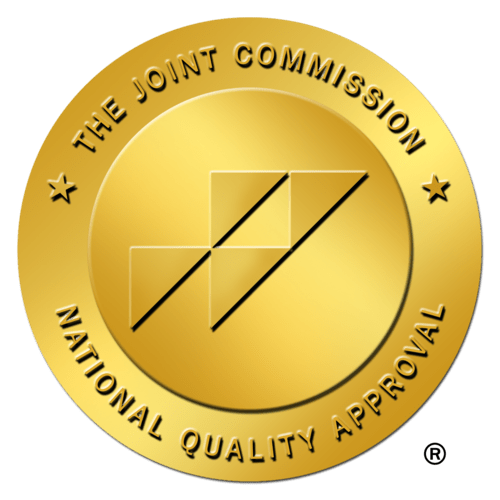
Fifty-two percent. That’s how many nurses in a recent American Organization for Nursing Leadership (AONL) survey recognized their work as having a negative impact on their health and well-being. In looking back at the triumphs of 2021 within the healthcare community and ahead at the nursing workforce success in 2022, we’d be remiss to not acknowledge the hurdles nurses across the country had to jump first.
From emotional exhaustion and burnout to staffing shortages to little to receiving no meaningful recognition, nursing professionals have consistently climbed uphill battles this past year. Of all clinicians, they also spend the most time with patients and are instrumental in leading hospitals to success via patient satisfaction and quality care outcomes.
But many of their challenges aren’t new to this year or last. There has been “a long-standing demand from the nursing community to improve their working conditions as well as pay.” As those demands mounted, the COVID pandemic found the world with “a shortfall of up to 6 million nurses.” An additional 4 million nurses are expected to retire by 2030.
With the weight of the current nursing shortage and of the lack of systematic support, it’s beyond time for the healthcare industry to listen to these professionals. Let’s take a look at 3 stories of nursing success in 2021 and how your facility can cultivate an environment where nurses are heard, included, and supported as they push forward to 2022 successes.
Nursing success stories of 2021
Leading with care during COVID
In 2021, COVID-19 vaccines became widely available and accessible worldwide. Kristie Alvey, APRN, led with compassion in cross-training nurses for med-surg and ICU during a time when many of her community’s providers were sick and units were at capacity.
Under the motto of kicking COVID to the curb in 2021, she helped open a new clinic that vaccinated between 150 and 500 people each day.
Researching the experience of nursing students of color
Nursing professionals Aron A. King, MS, RN, and Kupiri Ackerman-Barger, PhD, RN, CNE, FAAN, presented their research on the impact of microaggressions on nursing students of color. It highlighted the psychological burden and discrimination that microaggressions cause, including its impact at a time when nursing schools are actively seeking to recruit a more diverse student population.

Their work prompts nursing leaders to create a “more culturally diverse, equitable, and inclusive environment for graduate nursing students of color,” noting that “graduated nurses [who have been educated in DEIB issues] specifically have the ability to reduce health disparities as educators, care providers, researchers, and leaders.”
Advocating for mental health support
Linda Scott, PhD, RN, NEA-BC, FNAP, FAAN, and University of Wisconsin–Madison School of Nursing dean, led a group of 11 nursing school deans from around the country to address mental health and suicide prevention among students. Her 20 years of research on nurse fatigue sparked her passion for advocating for policy change. Nurses are at a higher risk of suicide than the general population, and advocacy like Scott’s is crucial to raise awareness of the ongoing strain nurses face each day.
Scott’s efforts, her years of research on nurse fatigue, and her dedication to diversity led to her 2021 appointment as president-elect of the American Academy of Nursing.
Improving your facility’s support of nurses in 2022
The need for nurses to deliver high quality patient care and satisfaction has not changed, but how facilities support the delivery of both continues to evolve. That certainly includes how facilities recruit, train, retain, and support nursing professionals.
In the United States alone, at least 500,000 new registered nurses will be needed by 2027. Their role in creating positive patient experiences within the value-based care landscape is unmatched. As members of the most trusted profession 19 years in a row, nurses will continue to shape healthcare through patient advocacy, innovative approaches and research, education, and compassion.
Here at CareRev, we’re sounding the alarm on the urgent need to improve support for nurses. Check out these 3 best practices you can implement at your facility today:
Embrace the changing workforce
A flexible workforce model is essential in today’s competitive and ever-evolving industry. Nurses value flexibility, independence, and work-life balance.
A recent survey of CareRev professionals found that:
- 64% joined because they needed a flexible schedule to better fit their lifestyle
- about 42% have a full-time job
- 58% planned to pick up shifts occasionally

We recently asked our nursing professionals about the impact of having a healthier work-life balance. Here are a couple of those experiences:
"Care Rev has allowed me to keep my full-time job and earn extra money on the side without putting myself into overtime. Not only am I better able to provide for my family but I've also been able to pay off debt, book a family vacation, and step out of my comfort zone to gain further emergency and critical care experience."
"I've worked full-time for a hospital near my home for 15 years. We were allowed to put in what we preferred for our schedule, but it would frequently be changed. I had to work every other weekend and every other holiday and request holidays off 6 months in advance. Now I just don't schedule myself if I want to take the weekend off, holidays off, or to take a vacation."
Recognizing their needs - and their willingness to actively seek out facilities that support those needs - is essential to attracting and retaining top talent.
So how can embracing a flexible workforce model impact your facility? You can count on it to help you:
- address fluctuations in supply and demand
- support your efforts to maintain proper nurse-to-patient ratios without excessive labor costs
- provide patients with high-quality care from nurses with the right mix of experience
- create a culture that prevents burnout and supports avenues for more rest and motivation
Cultivate a culture of technology
In 2022, there’s no doubt that the present and the future of healthcare rely on technology. Humanity is at the core of the nursing profession, something technology can never replace. But digital solutions and tools can enable nurses to spend more time with patients, tackle their day-to-day duties more quickly and efficiently, and even choose more flexible career avenues.
When your professionals benefit from technology, so does your facility. For instance:
- reducing documentation burden from nurses with voice technology can help ensure the capture of quality data
- facilitating the ability of nurses to remain acutely aware of patient needs with software-enabled command centers can improve patient experiences
- offering on-demand staffing enabled by mobile technology through CareRev allows you access to a pipeline of local and fully vetted pier-diem nurses and to focus more on patient care
Support learning and inclusion
From enrolling in continuing education to carving out a seat at decision-making tables to shaping initiatives in support of diversity, inclusion, equity, and mental well-being, nurses value the ability to grow. To build the nursing workforce of the future, foster an environment that:
- makes such learning opportunities available and accessible
- provides the administrative structure needed to see nurses succeed
- focuses on dynamic teaching and learning styles
- embraces differences for more impactful collaboration
- defines practical avenues to highlight diverse nurses’ voices
- offers incentives to nurses for embracing lifelong learning opportunities

Well-informed, diverse nursing voices will help your facility ensure it’s prepared to tackle industry transformations and to better advocate for your patient population.





